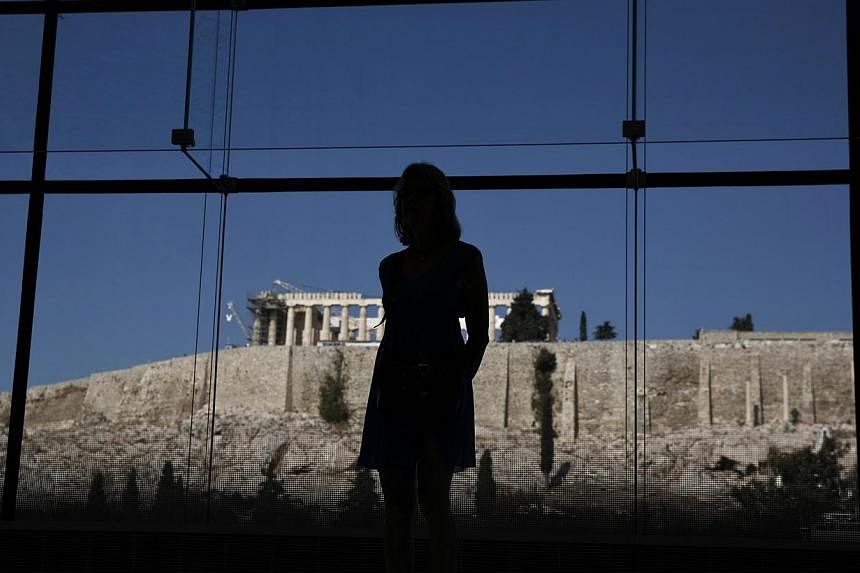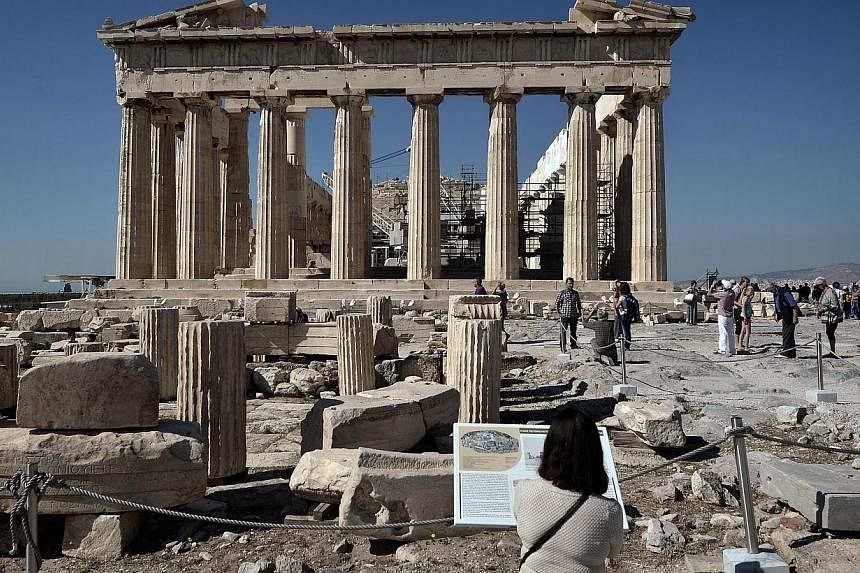In the latest of her slew of high-profile cases, lawyer Amal Alamuddin Clooney will be advising the Greek government on Britain's possible restitution of the Elgin Marbles to Greece.
The Lebanon-born lawyer, who is married to Hollywood heart-throb George Clooney, flew into Athens on Monday.
Together with her team, the 36-year-old will be meeting Greece's Prime Minister Antonis Samaras and Culture Minister Constantinos Tassoulas.
Here are five things to know about the Elgin Marbles.
1. How did the sculptures get their name?
The Elgin Marbles, also known as the Parthenon Sculptures, got their name from a Scottish diplomat who took them from the Parthenon temple in Athens, Greece.
Known as Lord Elgin, Thomas Bruce was the 7th Earl of Elgin and ambassador to the Ottoman Empire, which occupied Greece in the early 19th century. He admired the temple's extensive collection of ancient marble artefacts.
He extracted and expatriated these sculptures, inscriptions and architectural features between 1801 and 1805.
The collection was purchased by the British government in 1816, and are currently housed in the British Museum in London.
2. Were they given or stolen?
Lord Elgin had an agreement with the Ottomans that he could remove anything from the Parthenon, as long as it did not interfere with the citadel's walls.
But the procurement has been a thorny bone of contention between both British and Greek governments.
Greece claims that the Ottoman sultan who gave Lord Elgin permission was bribed and had no authority over the Parthenon as an occupier.
The British have argued, however, that returning the marbles would destroy them and set off a domino trend that would drain the exhibits of many European museums.
The Elgin Marbles were featured in Time magazine's list of Top 10 Plundered Artefacts.
3. What's left at the Parthenon?
It is believed that Lord Elgin took about half of what was left at the Parthenon at that time.
The Parthenon and its components have a history that dates back about 2,500 years, when they were built to honour Athena, the Greek goddess of war and wisdom.
Through the years, the Parthenon was transformed into a Christian church and a Muslim mosque, and defaced along the way.
The Parthenon was further ruined in 1687 during the Last Crusade, when gunpowder stored inside it exploded.
Today, sculptures from the original temple survive in museums in eight countries, including the British Museum in London, the Louvre in Paris, the Vatican and the Acropolis Museum in Athens.
Lord Elgin's collection comprises 247 feet of the original 524 feet of frieze, 15 of 92 metopes, 17 pediment figures and various other chunks of architecture.
Objects from other buildings on the ancient citadel known as Acropolis - the Erechtheion, the Propylaia, and the Temple of Athena Nike - are also on display in this collection at the British Museum.
4. Were there other attempts to acquire the sculptures?
Even before Waterloo, French conqueror Napoleon had to deal with the setback of not obtaining the Elgin Marbles.
Lord Elgin had many lucrative offers for the marbles, including one from Napoleon. But he declined all of them.
Instead, he sold them for £35,000, about half of his estimated costs, to the British government. It was later acquired by the British Museum.
Because of this, some historians and archaeologists believe that instead of for personal gain, Elgin had acquired the marbles with the intention of displaying them at the museum.
5. Who has called for the return of the artefacts?
Several English poets have chided fellow countryman Elgin for pilfering the Greek artefacts, such as Horace Smith, who labelled him a "marble-stealer".
But perhaps no one put it quite as bluntly as Lord Byron in his narrative poem, Childe Harold's Pilgrimage, which was published between 1812 and 1818.
He wrote: "Blind are the eyes that do not shed tears while seeing, O, Greece beloved, your sacred objects plundered by profane English hands that have again wounded your aching bosom and snatched your gods, gods that hate England's abominable north climate."
Several campaign groups have also sprouted to push for the reunification of the Parthenon components in Athens.
In 1983, the British Committee for the Reunification of the Parthenon Marbles was founded by a group of British citizens.
"If you visit the Acrospolis Museum you see gaps in the displays, ghostly images of the pieces that remain in the British Museum," committee chairman and former Labour MP Eddie O'Hara told The Telegraph.
"This monument has a special place in Western civilisation and it should have its integrity restored," he added.
In 2005, the International Association for the Reunification of the Parthenon Sculptures was created and to date, 17 countries, including the United States, Russia and Germany, are represented.
Famous celebrities such as Judi Dench, Vanessa Redgrave and Ian McKellen have also lent their support to the cause.
Sources: AFP, BritishMuseum.org, Time, Encyclopaedia Britannica, About Education, The Guardian, Museum Security Network, ParthenonUK.com, ParthenonInternational.org, MarblesReunited.org.uk






